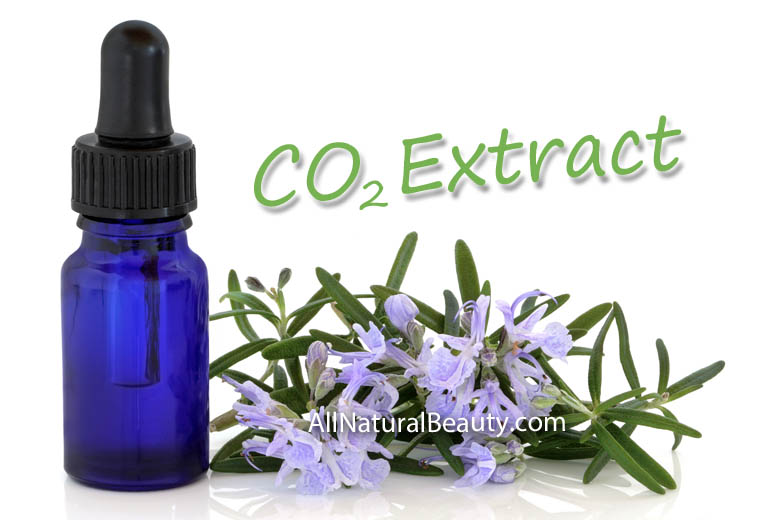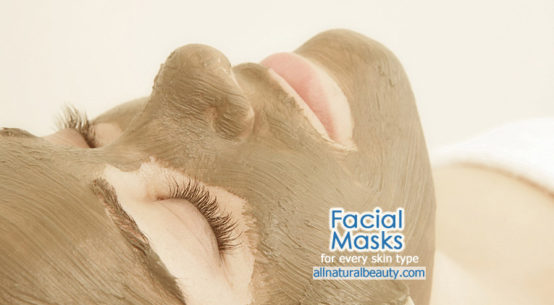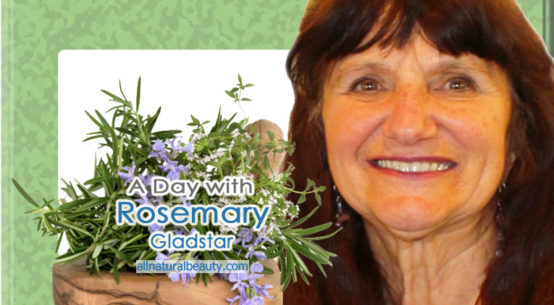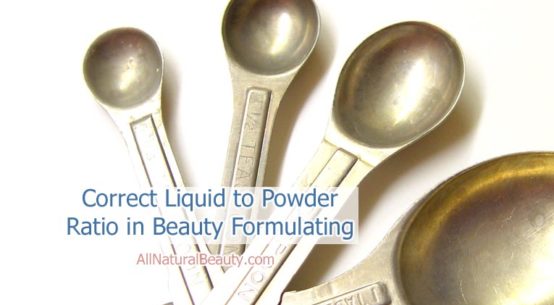
By Jeanne Rose
Eucalyptus Part 2 Synopsis ~ Includes properties, uses, how to use the herb and oil, chemistry, tomato tales, history, references, precautions, blending and formulas for health and well-being.2

Beautiful Eden Botanical Eucalyptus oils and Eucalyptus trees
Eucalyptus Part 1 Synopsis ~ Eucalyptus leaves have been used for thousands of years, there are many species, that support the health of your body; contains species information and general descriptions, harvest location, and sensory characteristics of many of the essential oils. [See Eucalyptus – Part 1 ]
EUCALYPTUS – PART 2 – GENERAL PROPERTIES
[For the individual oils see See Eucalyptus – Part 1]The most common species available will be the oils of E. citriodora, now known as Corymbia citriodora, the Lemon Eucalyptus from Malawi, Madagascar, and Australia; E. dives – Broad-leafed Peppermint Eucalyptus. This contains piperitone, but there are E. dives with identical morphology but different forma which do not contain this peppermint-scented chemical; E. globulus – Blue Gum Eucalyptus at home in southeastern Australia and there are several subspecies with a different distribution. Also found in Portugal and the USA in different terroir and thus slightly different odors. It is also named Fever tree as it was planted to drain malarial swamps in the Eastern Mediterranean area; E. polybractea – Mallee or Blue-leaved Mallee Eucalyptus from Australia and E. radiata – Narrow-leaf or Narrow-leaf Peppermint Eucalyptus from Australia and So. Africa.
Properties of Eucalyptus – The properties of Eucalyptus oil can be by IG=ingestion or IN=inhalation or AP=application.
• Inhalation: Antiseptic, expectorant, mucolytic, anti-infectious, antibiotic, antiviral, bactericide, and tonic.
• Application: Antiseptic, anti-infectious, antibiotic, antiviral, anti-inflammatory, pectoral, vulnerary, stimulant, mild local analgesic.
• Ingestion: Antiviral, expectorant, anti-infectious, antibiotic, tonic and febrifuge.
USES – any Eucalyptus essential oil will work best on the respiratory system.
∞ It is the Oil of Respiration ∞
EUCALYPTUS
Here are some of the conditions Eucalyptus oil and leaf might treat.
bronchitis
colds
ear infections (otitis)
flu
sinusitis
sore throat
Good for ~
acne
burns
chickenpox
depression
emotional overload
exhaustion
fever
herpes
insect repellent
shingles
tissue regeneration
urinary tract
vaginitis
wound healing
EXTERNAL USE of Eucalyptus Oil ~ This oil is used externally as a simple or in a blend, externally as a massage for arthritis, for muscle pain, asthma, bronchitis, congestion, coughs, or on simple burns, and as a disinfectant-antiseptic, for fibromyalgia, and as an insect repellent.
Eucalyptus is cooling and has a powerful action in all types of fevers. An easy way to apply the EO and to induce good sleep is to massage E. smithii or E. radiata onto the feet, particularly on the soles. For aching muscles and joints, apply or massage directly onto the area. I prefer a blend mixing the Eucalyptus globulus with Sage or Rosemary oil.
EUCALYPTUS- DIFFUSE/DIFFUSION ~ Any of the Eucalyptus oils can be used in the diffusor, and mix easily in various blends that include spices, woods, seeds, roots, leaves, citrus and any of the herbs. The Blue Gum, Eucalyptus globulus seems to be quite stable in soap and is uplifting and fragrant. Quite an easy oil to use and to diffuse.
I especially appreciate using an inhalator, shown below. A very good piece of equipment to use for inhaling essential oils with either steam or hot water.
the inhalator, a funnel shaped tool to hold hot water and essential oils.Inhalator
EUCALYPTUS – EMOTIONAL/ENERGETIC USE ~ “In energy work, the family Myrtaceae and especially the genus Eucalyptus is considered to be notable for its balance of all the elements of air, fire, water, and earth. It brings this balance to healing. It achieves this by focusing its effects on the energy centers, which are the lungs and the metabolism. The Eucalypts roots drain water from the swamps, and so does the essential oil of the leaf drain mucus and bring it up from deep in the lungs. It is strong and vigorous in its nature and is resistant to insects and disease — this indicates the power of the essential oil in healing and as a restorer of energy, vitality and balance to a system that has been physically or emotionally weakened by illness. It restores life in general and aids in the prevention of disease by shoring up the reserves of the immune system.”1
An Energizing Formula is a combination of Eucalyptus (Eucalyptus globulus) and Rosemary (Rosmarinus officinalis) in equal parts, inhaled on a hanky or via a diffuser or 6 drops of the formula with a carrier oil for massage.
EUCALYPTUS – INTERNAL – Internal Uses ~ We do not recommend the internal use of Essential oils. If you choose to do so, it is recommended that competent complementary medical advice be received. Take at your own risk!
Some use Eucalyptus oil for urinary tract infections (UTI). It has diuretic and antiseptic properties. Here you may wish to make a mixture of Australian Sandalwood and Eucalyptus smithii in a formula of 1•1. Take 2-3 drops in a gelatin capsule, Cranberry or Marshmallow root capsule or in honey 3X/day for no more than 2 days.
Eucalyptus-pt 2.

On my way to a distillation in Napa Valley I came across this beautiful Eucalyptus tree
– Eucalyptus –
EUCALYPTUS BLENDING AND PERFUMERY
BLENDS BEST ~ Eucalyptus blends well with many essential oils especially those with therapeutic value such as Black and Green Pepper, various species of ‘cedar-wood’, herbs such as Lavender, Lemon Balm, Peppermint, the grass oils such as Lemongrass or Palmarosa, all type of seed oils and root oils, Mediterranean oils of Rosemary, Lavender, Marjoram, and other Australian oils from the Leptospermum spp. (aka teatrees), and conifer oils and the citrus oils. All sorts of therapeutic formulas can be made with one or another of the Eucalypts.
•
EUCALYPTUS – BLENDING WITH FORMULA ~
FORMULAS & RECIPES
All-Purpose Formula: For all respiratory tract infections, herpes, sore muscles, strains, athlete’s foot, parasites, and fleas… Mix 3 drops each of E. globulus, Rosemary and Lavender to 1 oz of Calendula infused or simple Olive oil. Apply externally to the chest and around the nose.
•Bedbug Repellent: Mix the following essential oils together; Eucalyptus citriodora (Corymbia citriodora) oil – 10%, Orange Oil – 5%, Peppermint Oil – 5%; with alcohol 80% of the formula . Spray everywhere.
• Herpes: You will want an EO that contains citral such as Lemon tea tree (Leptospermum citratum or L. petersonii) from Australia with 80% citral and some citronellal. Mix 3-4 drops each E. globulus, L. citratum, Citrus x limon (Bergamot), and Pelargonium graveolens to 1 oz of Lemon Verbena or Melissa hydrosol. Apply 1-drop externally to the mouth or nose herpes. Shake vigorously before each use. It will ‘bite’ you.
•Insect Repellent: Add 1 teaspoon of E. citriodora (Corymbia citriodora) + ½ t. dish soap to make an emulsion. Add this to 1 cup of warm water or Tea Tree hydrosol. Rub into the skin before going out to make a powerful insect repellent.
• Respiratory: 1 drop each of any Eucalyptus, Lavender CT cineol*, Pine or Fir, and Thyme. Add to a pot of boiling water, bend over the pot, and cover head and pot with a towel. Inhale through the nose to treat the sinus and exhale through the mouth, then inhale through the mouth and exhale through the nose to treat the throat and lungs. Or use the oils and technique explained in ‘Sequential Inhalation”.
* In 1870, F. S. Cloez identified and ascribed the name “eucalyptol” to the chemical that is now correctly known as 1,8-cineol.
• Tonsillitis/Sore Throat: Mix equal parts of Eucalyptus, Tea tree and Thyme and put into a diffuser. Open mouth near diffuser spout and breathe in through the mouth and out through the nose for 1-2 minutes every half hour or so. For children use half the amount of Thyme. I have known some students use a Q-tip to paint the tonsil area with a bit of this mixture or Tea Tree or Clove oil for sore throat. But it is not something that I could do.
— The Aromatherapy Studies Course. Institute of Aromatic Study.
San Francisco, CA.
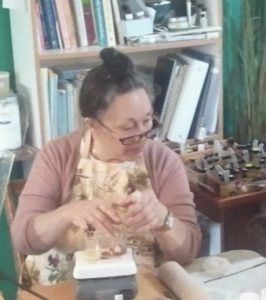
JeanneRose in the Perfumery
EUCALYPTUS – PERFUMERY ~ I have never used any of the Eucalypts in a perfume, although I have seen it listed in Chrissie Wildwood’s book, in a list as a perfume top note and that it blends well with Lavender and Rosemary. I do agree that it blends well with many oils and is used in blends for massage and therapy, but I would not use most of the popular species of Eucalyptus in a true perfume.
It is possible that 1-drop of Eucalyptus dives ct. piperitone or other Eucalypts with 100 drops of sweet scents would uplift and enhance the perfume.
Eucalyptus macarthurii is mainly used in perfumery because its major component is geranyl acetate up to 44-56% and some of its varieties as high as 70%. It also contains geraniol, linalool and α, and β-eudesmol. I have not had the opportunity to smell this oil but imagine it might be similar to some types of Pelargonium spp. with their pleasant fruity/floral aroma.
EUCALYPTUS – HYDROSOL ~ I have not had the opportunity to distill or use Eucalyptus hydrosol. The only person I knew who did distill a species of Eucalyptus became sick because of the odor of a component called cuminaldehyde. Now of course we know we should distill some of the species twice to have the best possible scent and therapeutic result. If you have distilled Eucalyptus and send me a bottle of its hydrosol, I will add it to this post.
PLEASE NOTE: A true hydrosol should be specifically distilled for the hydrosol, not as a co-product or even a by-product of essential oil distillation. The plant’s cellular water has many components most are lost under pressurized short steam runs for essential oil, or by using dried material. We recommend that the producers specifically distill for a product by using plant material that is fresh.

Eucalyptus – Chart with both Chinese & Western Uses

6 botanical species of Eucalyptus oil of Australia showing organoleptic qualities and some very color-full oils. 6 botanical species of Eucalyptus oil of Australia showing organoleptic qualities and some very color-full oils.
From left to right is E. globulus, #5 E. stageriana, #4 E. polybractea, #3 E. dives, #2 E. radiata, #1 E. citronella (Corymbia citriodora)
•
INHALING Respiratory oils SEQUENTIALLY AS A TREATMENT
For Cold & flu*
This is the most important reason JEANNE ROSE uses the Eucalyptus EO!
Be prepared to fight those awful cold & flu season symptoms with pure, therapeutic quality essential oils from plants. No drowsy side effects! 100% natural! Include in the treatment Black Spruce, Douglas Fir (organic), Eucalyptus radiata, Fir Pine (Abies siberica, 1975), Rosmarinus pyramidalis, for the sinus and Ravensara aromatica (organic).
•
SEQUENTIAL INHALATION WITH a COLDS & FLU KIT
From Jeanne Rose Aromatherapy Studies Course
There are six essential oils suggested in the Jeanne Rose Aromatherapy Colds & Flu Kit and they include Black Spruce (stimulate the adrenal), Douglas Fir (antiseptic and disinfectant), Eucalyptus radiata (expectorant and mucolytic or liquefies the mucus in the lungs), Rosmarinus pyramidalis (sinus cleanser and relief), and Fir Pine is Abies spp. (cleanser and respiratory tonic), and Ravensara aromatica (antiseptic, antiviral).
When there is any sort of respiratory congestion, it is good to inhale the essential oils in hot water. Your mother probably taught you to do this. You will need a pot, water, essential oils and a towel (or an inhalator). Bring two cups of water to a boil in a small pot. Bring the pot to the table. Cover your head with a towel over the pot making a tent. Now add one drop of essential oil at a time to the pot. Inhale until the scent is gone and then add the second oil. Continue until you have used all six oils. Use the oils in the sequence as given above. This will take about six-eight minutes. Do not add more than one drop of essential oil at a time. Inhale the scent until the scent is gone (about one minute). [If you add more than one drop at a time you will probably gag and cough which is not a healthy act].
Inhale through the mouth, exhale through the nose; then inhale through the nose and exhale through the mouth. Alternate throughout the procedure. This gives the essential oils a chance to cleanse both the sinus area and the throat and lungs.
By inhaling only one oil at a time, you will be getting the full benefits of the oil before moving on to the next.
Black Spruce is stimulating to the adrenals to get them to start working and to prevent asthma attacks as well as to help get the person off synthetic cortisone.
Douglas Fir is relaxing to the airways and has a bit of limonene. Limonene is an unsaturated monoterpene and the main component in the essential oil of citrus and some conifers. It functions extremely well as an ozone scavenger. It may be a key to preventing asthma since natural “ozone scavengers” – produced by all plants – can help break the cycle that makes treating asthma so difficult. Douglas Fir also refreshes the air.
Eucalyptus radiata is a very gentle Eucalyptus oil that acts as mucolytic, liquefying the mucus in your nose and lungs and helping to eliminate it through coughing or sneezing.
Rosmarinus pyramidalis, for the sinus, is cleansing and tonic to the sinus and stimulates the body to wake up and the brain to wake up, to get up and to feel good. The oils also help refresh the air. This Rosemary is a specific to cleanse the sinus.
Fir Pine (Abies siberica. Fragrant and antiseptic, inhaled to discourage bacteria in the airways.
And finally, Ravensara aromatica, which is anti-infectious and expectorant.
*The Jeanne Rose Colds & Flu Kit came with full directions was only $45.00 and included the above six Essential Oils and was packaged in a Handcrafted Tapestry Bag. This kit is no longer in production, but it can be made by you. Should you want my kit, please privately order at aromaticplant@yahoo.com
•
EUCALYPTUS – PHARMACEUTICAL USES ~ “Eucalyptus oil is used in throat lozenges; chest rubs and liquids for the purpose of clearing mucus from the nose and lungs and to relieve upper respiratory distress. It is mucolytic. It is also used in air fresheners, deodorants and insecticides. These are exactly the same reasons we use Eucalyptus in aromatherapy but without the synthetics, alcohol, dyes and artificial flavorings mixed in.” —unnamed source
EUCALYPTUS – HERBAL USES ~ I have mentioned the herbal uses of Eucalyptus leaves in several of my books. The leaves can be used in the bath as an infusion for cleansing and the “antiseptic action and the scent coming off the bathwater is especially nice when you have a cold or a respiratory problem.”12 The leaves are used also in sleep pillows for breathing problems, and they are useful in mixtures of herbs for dandruff or scalp conditions. The leaves of most species can also be used when they have been macerated or decocted in oil (then strained), the infused oil being used in lotions, ointments for chapped hands, or as a rub for aching muscles. This is a very useful leaf to use herbally. Here is a link to a great chart that lists both herbal and essential uses of 81 plants. http://www.jeannerose.net/articles/EO_Herbs.htm
The leaves of various species of Eucalyptus are used as a flavorant in Gothic Gin.
EUCALYPTUS – AGRICULTURAL USES ~ One of the most interesting uses I have found for Eucalyptus is in the gold business. Apparently, if Eucalyptus grows where there is gold in the earth, these trees that suck water out of the soil, (when there is gold in the soil) will absorb the gold into their leaves via the water. However, gold is toxic to Eucalyptus leaves and is then excreted. The leaves drop, the gold searchers need only test the leaves rather than digging huge holes and if the leaves come up positive then the searchers start the digging. In Canada, this is done with Pine leaves (needles) and in Australia, it is Eucalyptus when hunting for gold and other precious metals.
Eucalyptus is a heavy user of water and is planted in marshy areas to drain the soil, with less water, there are fewer mosquitoes and in some areas, fewer mosquitoes means less malaria.
EUCALYPTUS – HISTORICAL AND INTERESTING ~ The essential oil .. “extracted from eucalyptus leaves contains compounds that are powerful natural disinfectants and can be toxic in large quantities. Several marsupial herbivores especially koalas and possums, are relatively tolerant of it. The close correlation of these oils with other more potent toxins called formylated phloroglucinol compounds (euglobals, macrocarpals and sideroxylonais allows koalas and other marsupial species to make food choices based on the smell of the leaves. For koalas, these compounds are the most important factor in leaf choice. Eucalyptus flowers produce a great abundance of nectar, providing food for pollinators that include bats, birds, insects, and possoms.”5
In 1870, F.S. Cloez identified and ascribed the name “eucalyptol” to what is now correctly known as 1,8-cineol. So, eucalyptol is an old out-of-date name and you should use cineol or cineole.
“In 1896 R.T. Baker and H. G. Smith collaborated on a series of investigations of the Eucalyptus species and “were the first to use chemistry as a means of differentiating species which showed very slight botanical differences.11”
“Malaria was extinguished from the swampy Paludi Pontine region near Rome through plantation planting with Tasmanian blue gum. The word malaria is Italian (mala aria) for ‘bad air’. Originally it was believed that the disease was caused by the foul smell from the swamps. The fragrant eucalyptus trees would freshen the air. Today, the beneficial effect is explained by a reduction of the mosquitos transferring the disease. The water demanding eucalyptus trees partly dried out the swamps, and the essential oil of the fallen leaves possibly hampered the development of the mosquito’s larvae.”6

4 different sets of Eucalyptus oil representing organic, and wild, 8 species, and 3 company lines.
Jeanne Rose EUCALYPTUS TOMATO TALES
Insect Repellant Formula ~ I use essential oils of Catnip, Lemon Eucalyptus (Corymbia citriodora) and Lemongrass for a bug repellent control. I have experimented with many blends and find that adding the Catnip oil significantly increases the effectiveness.
Formula:
½ oz Neem oil and add ½ oz of Coconut oil and shake together with ½ cup 95% neutral grain spirits.
Add:
1-dram (120 drops) catnip oil – attracts cats but repels bugs. (Don’t use this in the jungle or woods where tigers, lions, and panthers live).
1-dram (120 drops) Lemon eucalyptus (Corymbia citriodora) E.O (bug repellent)
1-dram (120 drops) Lemongrass/Citronella mixture E.O (bug repellent)
2-ml (60 drops) Lavender/Peppermint E.O mixture for scent (Total 420 drops)
Succuss the essential oils together well to integrate (mix). And then add the Neem and vegetable oil and alcohol and shake well (succuss) before using each time. When you wish to use this, dilute 1-2 times with hydrosol or distilled water. Put into spray containers and use liberally. Shake before each use. This recipe must also be reapplied frequently. It does require frequent reapplication; you could increase the Lemon eucalyptus (Corymbia citriodora) or add more fractionated coconut or grapeseed oil.
Personal Preferences in this formula. I prefer using the alcohol to vegetable oil because the oil makes you feel sweaty and that attracts bugs. A light spray of the scented alcohol works better for me. The spray mixed with 50•50 with distilled water or Catnip hydrosol lasts from 1-3 hours depending on how much a person sweats. In an unscented lotion base, it will last longer. The total essential oil content is about 1.5% in the spray and less than that in the lotion since it stays on longer and people tend to apply more if using the lotion. Use this at dusk and spray the screens and mosquito netting (both at dusk and before bed). This recipe is a combination of a student and my personal research.
EUCALYPTUS – CHEMICAL COMPONENTS ~ Upon distillation it takes approximately 125 lbs. (50 kg) of Eucalyptus leaves to produce 2.5 lbs. (1 kg) of Eucalyptus oil. The primary chemical constituent of Eucalyptus oil is 1,8-cineole (aka eucalyptol or eucalyptus oxide). Cineole belongs to a group of chemical compounds called oxides. The properties of Oxides are known to be mucolytic, expectorant and for those with an ‘energetic’ mind-set, centering. Whenever you find cineole in essential oil in large quantities, you know that that EO. is going to be very good for the lungs. Many Eucalyptus species contain at least 70-80% cineole. Even Lavender oil with cineole will be useful for the lungs (cineole is considered an off-chemical for Lavender and indicates a poor quality E.O.).
The Eucalyptus essential oil generally comprises 70% cineole, pinenes, sesquiterpene alcohols, aromadendrene, and cuminaldehyde.
The chemistry of the Eucalyptus oils is very interesting. Each species has different components.
An example is Lemon Eucalyptus (E. citriodora) now called Corymbia citriodora contains 60% citronellal and 20% citronellol. This is a better smelling scent than Citronella and because it has more of the alcohol citronellol it also is a better bug/insect repellent. This EO is not very expensive and would be a great addition to soap. Bug repellent, when inhaled, it is also calming and relaxing.
E. dives whose chemistry can change within a small group of the trees, has several distinct chemotypes and large quantities “have been distilled for the manufacture of synthetic thymol and menthol”14 if the principal component was piperitone. “The observance of physiological forms was first observed in this species”.14
E. globulus usual chemistry is 63% 1,8-cineole, 22% alpha-pinene, 4.6% limonene, 2-3% aroma-dendrene and the properties are expectorant, mucolytic, stimulant and mild local analgesic.13
The chemistry of E. polybractea CT cryptone is 54.5% cineole, 19.7% beta-phellandrene, 6.8% alpha-phellandrene, 2.7% limonene, 1.6-1.9% each of alpha-pinene, alpha-thujene, sabinene, myrcene, terpinene-4-ol, cryptone and the essential oil properties are mucolytic, expectorant, antiviral, anti-malarial.13
E. radiata chemistry is50-70% 1, 8-cineole, 8-32% alpha-terpineol, 6-8% limonene, 2-4% alpha-pinene, 1-2% myrcene, beta-phellandrene, terpinene-4-ol, terpenyl acetate and the EO properties are Mucolytic, expectorant, anti-infectious, rhinitis, and muscle relaxer.13
E. smithii chemical profile is 78% cineole, 8 % alpha-pinene, 6% limonene and 2% alpha-terpineol and the EO properties are Mucolytic, anti-infective, disinfectant, local analgesic, calming.13
•YIELD ~ The yield of E. globulus is from .75 to 1.25% while E. polybractea is .75 to 2.% and up to 5% for some species. The season of the harvest and the age of the plant affects the yield. Young plant material yields more oil.
•SOLUBILITY ~ Eucalyptus oil is soluble in 1.5 to 3.0 volumes of 70% alcohol. Some species are soluble in 1.0 to 1.2 volumes of 70% alcohol.
Abstract/Scientific Data ~ In Food Chemistry, vol. 129, Issue 4, 15 Dec. 2011, pages 1427-1434, there was an interesting article called, “Antibacterial activity and chemical composition of 20 Eucalyptus species’ essential oils. [https://doi.org/10.1016/j.foodchem.2011.05.100]. The highlights include the information that ten chemotypes were identified, including cineole, cryptone, and others.
Key Use ~ The Oil of Respiration
• Resources ~ I have made great use of the website called www.google.scholar.com for a variety of interesting scientific studies.
•References:
1Adapted and Used with permission. The Aromatic Thymes. Vol. 2. #1. Winter 1994.
2 https://www.anbg.gov.au/cpbr/cd-keys/Euclid/sample/html/history.htm
3 https://anbg.gov.au/aborig.s.e.aust/eucalyptus-species.html
4 Optimum planting densities for the production of eucalyptus oil from blue mallee (Eucalyptus polybractea) and oil mallee (E. kochii). Author links. P. L. Milthorpea, M.I. H. Brooker, A. Sleeb H. Nicolc. 1998.
5 Wikipedia
6http://www.bojensen.net/EssentialOilsEng/EssentialOils11/EssentialOils11.htm#Eucalyptus
7Private communications.
8 https://onlinelibrary.wiley.com/doi/abs/10.1002/ffj.2730090203
9 GC/MS analysis of volatile constituents and antibacterial activity of the essential oil of the leaves of Eucalyptus globulus in atlas median from Morocco
10 Chemistry and bioactivity of Eucalyptus essential oils. Allelopathy Journal 25(2):313-330 • April 2010
11 A Research on the eucalypts and Their Essential Oils by R. T. Baker and H. G. Smith.
12 The Herbal Body Book by Jeanne Rose. 2000. Available at www.jeannerose.net/books.html
13 http://www.aromaticplantproject.com/articles_archive/Australian_Essential_Oils.html
14 Guenther. The Essential Oils, vol 4, p. 465
Brooker, Ian and David Kleinig. Eucalyptus, An Illustrated Guide to Identification. Reed Books, Australia. 1996
Elliott, W. Rodger and David L. Jones. Encyclopaedia of Australian Plants
FLORA. Publication of the California Native Plant Society. Summer 2019
Franchomme & Pénoël .Aromatherapie
Guenther. The Essential Oils.
http://www.aromaticplantproject.com/articles_archive/Australian_Essential_Oils.html
Herbal Studies Course/ Jeanne Rose & Berkeley, California: North Atlantic Books, 1992, 2018
https://catalogimages.wiley.com/images/db/pdf/0471273961.excerpt.pdf (Nomenclature &taxonomy)
Mabberley, D. J. Mabberley’s Plant-Book, 3rd edition, 2014 printing, Cambridge University Press.
Rose, Jeanne .The Aromatherapy Studies Course, CH. 14. 1999.
Webb, Mark A. Bush Sense, Australian Essential Oils. Griffin Press, Australia. 2000
Rose, Jeanne. 375 Essential Oils and Hydrosols. Berkeley, California: Frog, Ltd., 1999
Rose, Jeanne. The Aromatherapy Book: Applications & Inhalations. San Francisco, California.
“Of all the essential oils Eucalyptus is one of the most powerful and useful.”
 Safety Precautions – Use with care or not at all on children and the elderly.
Safety Precautions – Use with care or not at all on children and the elderly.
SAFETY PRECAUTION ~ Use with care or not at all on children and the elderly
This entry was posted on December, 2019, on the Jeanne Rose Blog at http://www.Jeanne-Blog.com.
Our thanks to Jeanne on her amazing blog, please make sure to check it out!
- Education
- Books
- Courses
Ms. Rose is the author of over 20 books, including Herbs & Things, The Herbal Body Book, The Aromatherapy Book, and Jeanne Rose’s Herbal Guide to Food, and she has taught herbs, aromatherapy and distillation extensively throughout the U.S. She organized and was President of the first large Aromatherapy organization in the United States, NAHA, and speaks widely at many other events and conferences. She teaches distillation techniques for quality essential oils throughout various parts of the world. The word, ‘hydrosol’ as used for the waters of distillation, was first used and put in place by Jeanne Rose in 1990.

Aromatherapy Classes,
Certification Weekends and Seminars
taught in person by Jeanne Rose
ENROLL NOW – Visit http://jeannerose.net/calendar.html
or call 415-564-6337 or email aromaticplant@yahoo.com
Enrollment limited.
Seminars are valid for 15 CE and towards Practitioner Certification

Jeanne Rose is the author of 22 books on herbs and aromatherapy. Most recently, Jeanne authored “375 Essential Oils & Hydrosols” which is a complete reference book of 375 aromatic plant extracts and hydrosols with phytochemical, clinical and botanical indices.
She has released several booklets since 2006.

Jeanne Rose is the Director of the Institute of Aromatic Studies, principal tutor of both the Herbal Studies Course© and the Aromatherapy Studies Course – Practitioner© by Distance-study and Aromatherapy Course by home-study.
Learn more about the 3 types of home studies courses:
The Aromatherapy Course
– Home and Family©
AROMATHERAPY STUDIES COURSE©
– Practitioner
HERBAL STUDIES COURSE©
Ms. Rose is the author of over 20 books, including Herbs & Things, The Herbal Body Book, The Aromatherapy Book, and Jeanne Rose’s Herbal Guide to Food, and she has taught herbs, aromatherapy and distillation extensively throughout the U.S. She organized and was President of the first large Aromatherapy organization in the United States, NAHA, and speaks widely at many other events and conferences. She teaches distillation techniques for quality essential oils throughout various parts of the world. The word, ‘hydrosol’ as used for the waters of distillation, was first used and put in place by Jeanne Rose in 1990.





